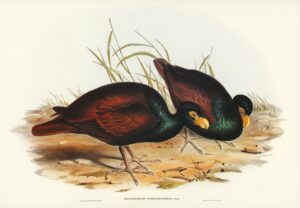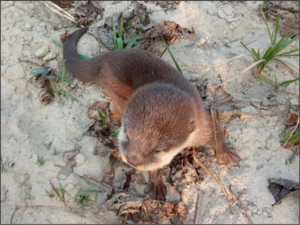An abandoned Bolivian road now brims with wildlife, proving that humans need only to retreat for nature to return.
For years, the so-called Camino de la Muerte, or “Death Road”, offered the only connection between La Paz, the world’s highest capital city, and northern Bolivia.

The Death Road in northern Bolivia. Photo: Andrew Clifforth/Shutterstock
This heavily trafficked road through the mountains attained a somewhat mythic status for its unrailed 100m drop-offs. In the 1990s, so many people died in accidents on the highway that the Inter-American Development Bank described it as “the world’s most dangerous road.”
That began to change in 2007 when Bolivia built the Cotapata-Santa Bárbara road. This safer alternative eventually reduced traffic on Death Road by 90 percent.
Now, 15 years later, the road flourishes with the country’s rich biodiversity of animals. A 2022 study from the Wildlife Conservation Society (WCS) found that the formerly busy highway teemed with different species of mammals and birds.

Photo: mezzotint/Shutterstock
‘Death Road’ grows safer for humans — and wildlife
Even before this study appeared in April, Death Road had become a popular eco-tourism destination.
The BBC delved into the road’s mysteries as recently as last May, highlighting the indigenous culture and wildlife that have replaced its fearsome reputation.
During the study, biologists installed 35 camera traps along 12km of road. The images captured 16 species of medium and large mammals and 94 species of wild birds.

The white-throated quail dove. Photo: Nick Athanas via Flickr
The most common animals include the white-throated quail-dove, a small deer known as the Peruvian dwarf brocket, a chicken-like bird called the Andean guan, and the oncilla cat, or northern tiger cat.

The oncilla cat, one of the animals now prowling the former Death Road. Photo: Creative Commons
“Highways of whatever kind cause a variety of negative effects, both direct and indirect, on animal life,” the study pointed out. This included “an increase in chemical pollution, the displacement of species, death by cars, and changes in behavior as the animals are disturbed by excessive noise.”
Proof that nature and humans can coexist
The study offers more evidence that small changes can allow nature to coexist with humans.
It’s become increasingly clear in recent years that adding wildlife crossings to roadways makes a huge and positive impact.
In 2012, Wyoming spent $11 million on underpasses, overpasses, and fencing at Trapper’s Point, which saw many migrating animals. Eight years later, a study found that human-animal crashes had fallen by 80 percent.
When Canada did the same thing for the TransCanada Highway through Banff National Park, they got the same result: an 80 percent reduction in large animal deaths.
The evidence is clear: governments that invest in protecting wildlife from roads will see results.






